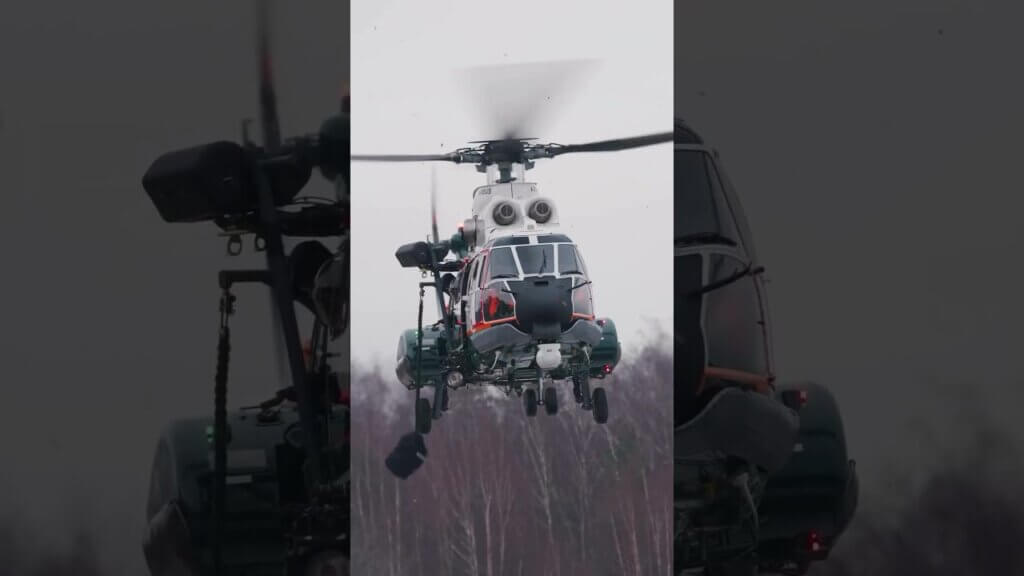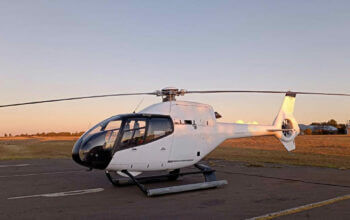BAE Systems is continuing to ramp up its investment in the electric aircraft market with a multi-million-dollar project at its facility in Endicott, New York.

BAE announced its move into the eVTOL space in 2019 through a memorandum of understanding with Jaunt Air Mobility. Since then, BAE has been talking with multiple eVTOL companies as well as developers of various electric airplanes, according to Justin McClellan, business development lead for aircraft electrification at BAE Systems Controls and Avionics Solutions.
In Endicott, where it employs more than 1,300 people, BAE is upgrading its engineering development, manufacturing, and laboratory space to focus on maturing energy storage, controls, and power conversion systems for aviation applications. BAE said the project will help address demands for new products in the aerospace industry while also harnessing the use of automation through robotics.
The investment, announced Dec. 9, leverages manufacturing techniques and processes that BAE has established over more than two decades of creating similar solutions for transit buses and marine vessels.
“Between our experience on the transit side . . . and then what we’re doing now in the aircraft space with the high-power eVTOL applications, and then some of the other things we’ve done in terms of marine vehicles and military vehicles, there really isn’t a challenge that BAE hasn’t seen in this electrification space,” McClellan told eVTOL.com in a recent interview.
“I think that’s really what we bring to the table, is significant wisdom that’s been built up across multimodal transportation as we move towards electrified platforms.”
For aircraft electrification, BAE expects to tap this multimodal experience in various ways. McClellan said that the company’s expertise in developing highly reliable batteries for transit buses will directly benefit its eVTOL customers, even though eVTOL applications will require batteries with higher specific power.
“When you look at the number of hours or road miles that those [buses] accumulate, it’s very similar to the number of hours that you may be accumulating on some of these aircraft,” he said. “And so that rigor and development of a reliable battery system is something that we brought into this market space to make sure that we can hit the 10^-9 safety levels that are going to be required . . . to make eVTOL flight safe.”

BAE said it currently tests the safety of its transit and marine systems with 12 motor dynamometers and five engine pods that simulate rugged environments. It will take a similar approach to testing its integrated systems for aviation applications, which include not only battery packs but also battery management, power conversion, and flight control systems.
Meanwhile, McClellan said, BAE is also looking at second- and even third-life applications for its aerospace battery packs that will deliver cost savings across its customer base. The batteries for eVTOL aircraft must deliver high power for vertical landings at the end of a flight, when they’re at a lower state of charge. This means that for safety reasons they’ll need to be retired at a conservative level of power fade, even if they still have significant capacity remaining.
“I think a natural transition would be to put them on some of our buses,” McClellan suggested. “[Buses] tend to have a lot less demanding applications and eVTOL packs with 80% capacity, for example, would be great to pass on to some of those transit customers.” Later, those batteries might also be used in certain stationary applications, he said.
Like some other players in the space, BAE is also exploring re-use of eVTOL batteries in fast charging systems for urban air mobility vehicles, where they would buffer demand on the power grid.
“When you start talking about a 250- or 500-kilowatt charge for some of these aircraft, and maybe multiple aircraft at a terminal, you start to really tax the ability of the grid to bring that power into a single building or a single area without doing serious construction. And so BAE is pursuing some avenues to deliver that demand from second-life batteries,” McClellan said.
According to McClellan, BAE is taking a “holistic, global approach” to sustainability and the electric aircraft market.
“We’re bringing our experience across several different areas of electrification coming out of the transit market . . . and then also our background in aviation and flight-critical avionics, combining that with our global footprint in terms of support, and bringing a lot of solutions to the market to help our customers go forward into electrification,” he said.








